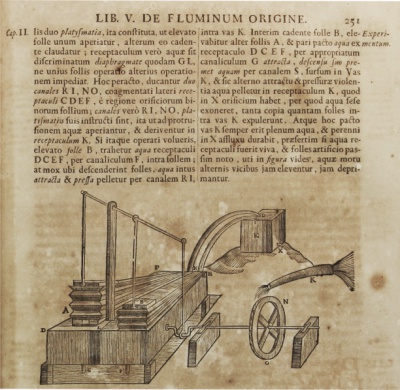The Modern Age and the evolution of the Alembic
The Modern Age
In 1557, Adam Lonicer, known in Latin as Lonicerus, wrote an important herbal in which hundreds of herbs and aromatic plants intended for distillation are described.
In this book, there is a section dedicated specifically to the alembics used during that period and a woodcut that encapsulates the entire distillation process of the 1500s: from the boys gathering simples (herbs and substances suitable for distillation), to the scholars consulting on the best ways to use these plants, to the apprentices pounding the herbs in the mortar and distilling them with a rather complex alembic, concluding with the doctor administering the aqua vitae to a sick person, the elixir of long life believed to cure any illness.
In this book, there is a section dedicated specifically to the alembics used during that period and a woodcut that encapsulates the entire distillation process of the 1500s: from the boys gathering simples (herbs and substances suitable for distillation), to the scholars consulting on the best ways to use these plants, to the apprentices pounding the herbs in the mortar and distilling them with a rather complex alembic, concluding with the doctor administering the aqua vitae to a sick person, the elixir of long life believed to cure any illness.
At the end of the 16th century the Vicenza doctor and chemist Angelo Sala (1576 - 1637) devoted himself to the distillation of spirits. His studies on the formation of alcohol by fermenting musts stimulated the work of other scientists.
Some publications also mention that the German Jesuit, Athanasius Kircher, carried out studies on marc as a source for alcohol and wrote about this to his Brescian confraternity brother Francesco Terzi Lana (1631 – 1687). However, such claims were never demonstrated with tangible proof.
Another important stage in the history of Grappa is marked by the Catalan Jesuit, Miguel Agustin, prior of the temple of Saint Jean de Perpignan. In 1617 he described a still suitable for obtaining aqua-vitae from wine as well as marc.
A big discovery occurred in 1680 when, on carrying out observations with a rudimentary microscope, the scientist Leeuwenock recognised the existence of yeasts, which are single-cell organisms that convert sugar into alcohol.
In the second half of the 18th century, the French chemist Lavoisier accurately identified the substances produced by the fermentation of sugars, thus opening the doors to a wider field of research.
The evolution of the Alembic
Vannoccio Biringuccio (1480-1539), from Siena, described the first alembic that distilled and rectified simultaneously, i.e., eliminating those parts rich in impurities produced at the beginning and end of the distillation cycle. This alembic, by passing vapors through narrow, long, and tortuous channels, held back the impurities and allowed only the best part of the distillate to be retained.
In the 17th century, the Neapolitan Giambattista Della Porta constructed a particularly unique alembic with the aim of obtaining spirits from a single distillation, being the first to intuit the principle of the distillation column. He named this long and narrow instrument the "Hydra with Seven Heads." This intuition, though initially overlooked, would forever change the history of distillation two centuries later.
In 1733, the Dutchman Herman Boerhaave devised an alembic equipped with a deflection cone, which served to purify alcoholic vapors and increase their strength, thus constructing the first distillation column in history. It was a rudimentary instrument that still required some modifications.
In the 17th century, the Neapolitan Giambattista Della Porta constructed a particularly unique alembic with the aim of obtaining spirits from a single distillation, being the first to intuit the principle of the distillation column. He named this long and narrow instrument the "Hydra with Seven Heads." This intuition, though initially overlooked, would forever change the history of distillation two centuries later.
In 1733, the Dutchman Herman Boerhaave devised an alembic equipped with a deflection cone, which served to purify alcoholic vapors and increase their strength, thus constructing the first distillation column in history. It was a rudimentary instrument that still required some modifications.




